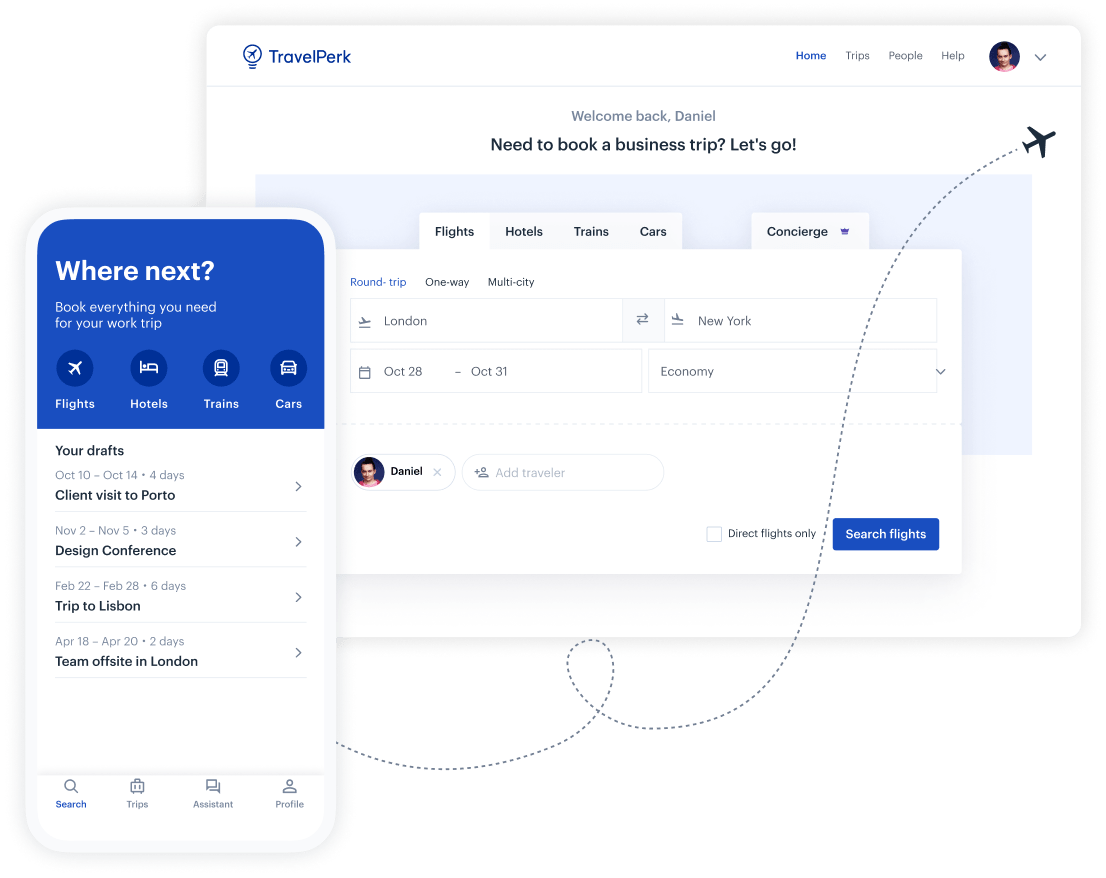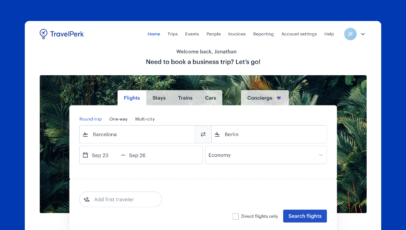One colleague in New York, another in Stockholm, and a third in Tokyo… Does this sound like your day-to-day experience at work?
Even if this way of working doesn’t sound familiar to you just yet, it might very soon. Globalization has led companies to spread out all over the world. The internet, new technologies, and the increasing accessibility of travel are making us all more connected than ever before. And with remote work becoming increasingly popular since the COVID-19 crisis, teams have become even more geographically distributed.
Today’s companies require an increasing amount of speed and flexibility, since they’re often coordinating team members in different places. They are increasingly faced with issues related to remote work, business travel, and employee relocations.
All this has led to a greater need for global mobility management.
What is global mobility management (GMM)?
Global mobility management refers to a company’s ability to move its workforce seamlessly and efficiently around the world. This may relate to temporary business travel, or to permanent employee relocations and international assignments.
The relocation process is far from simple—especially where permanent expatriation is concerned. It involves many complexities around visas, integration, taxes, and more.
Still, there are many good reasons to move employees around the world. Different countries have different markets, unique areas of expertise, and opportunities for business growth. And offering employees the opportunity to expatriate can enhance the employee experience, providing them with an incentive to grow their career within the company.
This is why many companies have developed global mobility programs to support their mobile workforce.
Which types of companies are concerned with global mobility management?
When you think of global mobility management, you may think of large multinational corporations with offices across the world. These types of companies are certainly in need of GMM—but today, they’re not the only companies dealing with global talent mobility.
Because of the rise of remote work and the “digital nomad” movement, an increasing number of employees are curious about moving abroad. These employees may work for any type of company, from a startup or small business to a larger enterprise.
As soon as an employee decides they’d like to work abroad, their employer may suddenly find themselves grappling with the complexities of international business. Global mobility management is relevant to almost every company with a remote workforce.
Who are the stakeholders involved in global mobility management?
Any number of stakeholders may be involved in managing global mobility—it depends very much on the size and nature of the organization.
In a smaller company, global mobility management responsibilities may fall to HR teams, legal professionals, or even the CEO. On the other hand, a larger company may have specialized staff working on global mobility management and expatriation—especially if they are frequently transferring large numbers of assignees between offices.
What are the main challenges of managing a mobile global workforce?
If your workforce is going global, you may find yourself having to think about challenges like:
- Culture shock: How will mobile employees adapt to settling in another country? What types of services should you provide to help them integrate? What happens if an employee has trouble adapting to the new place—how can you support them?
- Local laws: What countries are your employees moving to? Do these countries have laws, rules, or regulations that could impact your business?
- Visas: Will you need to be involved in procuring employees a visa or residence permit? Will they need sponsorship, and how much will this cost?
- Taxes: Will starting operations in a new jurisdiction have tax implications for your company?
If you are new to global mobility management, your company may need help with some or all of these areas. You may need to seek out legal experts, immigration experts, HR experts, or other global mobility professionals to assist you. You may also want to invest in specialized tools to facilitate the process.
What to consider when managing employee relocations
Here are the main factors to keep in mind when developing your global mobility policies:
Employee compensation
Compensation can vary widely based on market conditions in different countries and regions. A mid-range salary in Silicon Valley may be a high salary in Minnesota, Marseille, or Mumbai, for example.
Many companies adjust their pay rates based on location and cost of living. 67% of employees expect their compensation to reflect their location, according to the Society for Human Resource Management.
But pay structures should be fair, transparent, and consistent with employees’ performance and responsibilities—no matter where they are located. In some cases, it may make sense to keep pay consistent, regardless of geographic location (for example, if the relocation is temporary).
Visa requirements
When managing an international relocation, companies often have to deal with cross-border visa issues. If the relocating employee needs a visa, the organization will need to allocate budget and resources to helping them procure one. This may involve:
- Paying visa fees
- Filling out sponsorship forms
- Giving the employee time off to visit the relevant immigration office or embassy, and arranging an interpreter if needed
- Retaining an immigration lawyer
Relocation support
Relocation is a complicated process, and it is often an expensive one. When sending an employee on a short-term assignment or permanent relocation, organizations should be prepared to offer support with:
- The physical move: traveling and transporting possessions
- Consider using a business travel software like TravelPerk to manage bookings and find deals on transport and accommodation
- Administrative procedures: setting up a bank account, registering with local government offices, transferring driver’s licenses, procuring healthcare, etc.
- Family transitions: finding a school or securing care for employees’ children
Integration and culture
Moving to a new place is often difficult. In the case of international employees, cultural integration can present a significant challenge. To ensure a relocation is successful, global mobility management professionals should consider providing:
- Language learning classes
- Learning resources and tips about the host country
- Resources and/or stipends to join activities and groups, and make new friends
Regulatory compliance
Before moving employees to a new location, be sure your organization has considered:
- Local labor laws: Do certain criteria need to be met to employ people at the new location? Are there specific requirements around labor rights, termination, vacation time, etc.?
- Information laws: Does the new jurisdiction have privacy restrictions in place, such as GDPR? Are there laws controlling the way information is shared?
- Business laws: If you haven’t already registered your business in the new jurisdiction, how can you do so?
- Tax laws: Will you be subject to new tax laws and treaties by sending your employees to work abroad? How will this affect your business?
Keep in mind that even sending a single employee to work overseas for a few months could count as “doing business” or “opening an office” in a new country.
Cyber security
If you’re primarily relocating employees to work abroad in your existing offices, your organization probably already has cyber security procedures in place.
However, if you’re sending employees abroad to work remotely, you’ll want to put policies in place for cyber security so your company’s information will be protected. Keep in mind that different countries have different norms surrounding internet usage and privacy.
Communication
Finally, you’ll want to consider communication. You’ll need to stay in contact with employees throughout the relocation process, which may involve coordinating with multiple people across time zones. Software tools can help you with these tasks, so you can manage your global mobility strategy in an organized way.
Global mobility management software: how can it help?
Although global mobility creates many challenges, there are numerous tools and mobility solutions you can use to ease the process. Specialized GMM software can greatly facilitate global talent management by enabling you to:
- Connect with service providers
- Keep track of important data
- Make cost and salary projections
- Manage payroll, tax, and immigration workflows
- Administer your relocation policies
- Create data visualizations and reports
How can TravelPerk help your business with global mobility?
TravelPerk is a business travel software that will help you easily make bookings all in one place, communicate with travelers in real time, and manage every aspect of the travel process. You can use it to find exclusive deals and discounts, track travelers in case of emergency and support them with 24/7 customer service, ensure compliance with built-in travel policies, and manage expenses.
Along with global mobility management software, business travel software can also be a crucial tool during the relocation process.
To learn more about how TravelPerk can help global mobility managers with business travel, book a free demo for more information and to see the software in action.
Start saving money on business travel for your company today!

Make business travel simpler. Forever.
-
See our platform in action. Trusted by thousands of companies worldwide, TravelPerk makes business travel simpler to manage with more flexibility, full control of spending with easy reporting, and options to offset your carbon footprint.
-
Find hundreds of resources on all things business travel, from tips on traveling more sustainably, to advice on setting up a business travel policy, and managing your expenses. Our latest e-books and blog posts have you covered.
-
Never miss another update. Stay in touch with us on social for the latest product releases, upcoming events, and articles fresh off the press.



